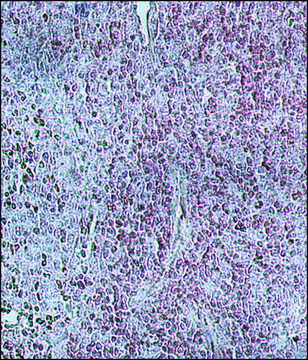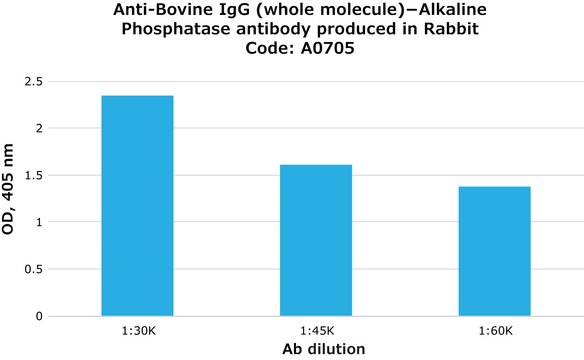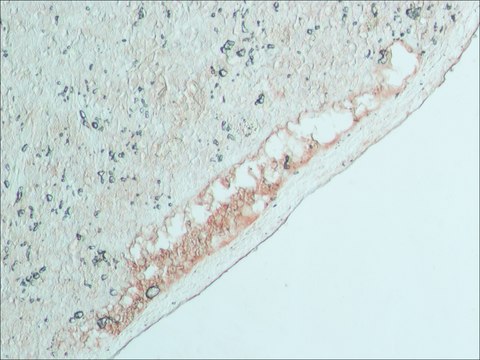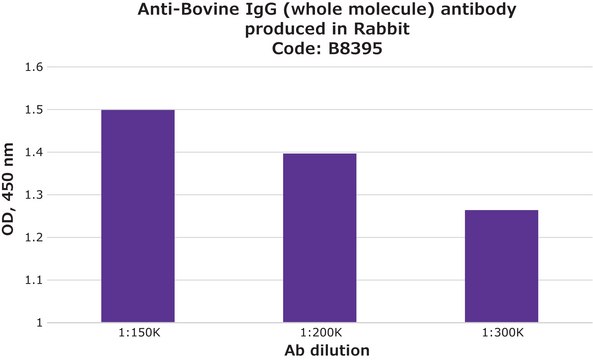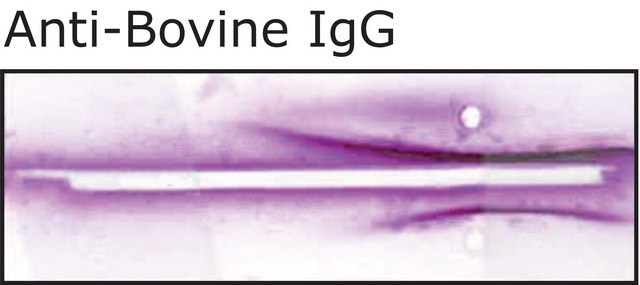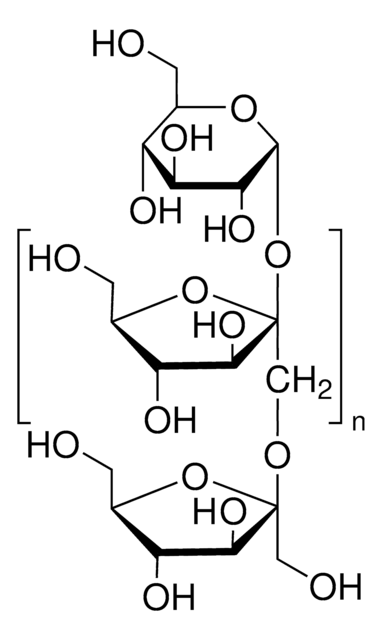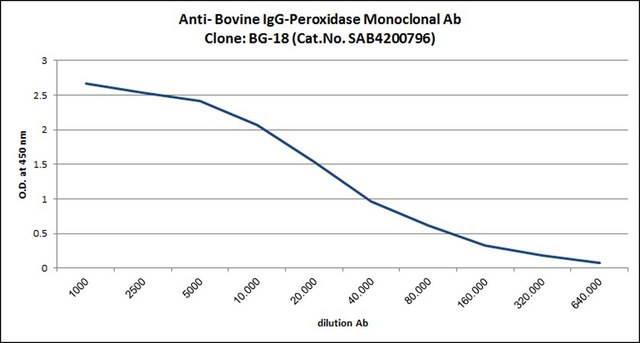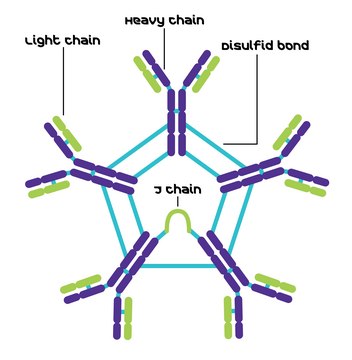I6137
Monoclonal Anti-Bovine IgM antibody produced in mouse
clone BM-23, ascites fluid
Sign Into View Organizational & Contract Pricing
All Photos(1)
Recommended Products
biological source
mouse
Quality Level
conjugate
unconjugated
antibody form
ascites fluid
antibody product type
secondary antibodies
clone
BM-23, monoclonal
contains
15 mM sodium azide
technique(s)
capture ELISA: suitable
immunoprecipitation (IP): suitable
indirect ELISA: 1:4,000
western blot: suitable
isotype
IgG1
shipped in
dry ice
storage temp.
−20°C
target post-translational modification
unmodified
Related Categories
General description
Bovine IgMs are glycoprotein antibodies that regulate antigen binding during immunological responses. These antibodies have three isotypes, namely, IgMa, IgMb and IgMc. Structural restraints on movement enhance the complement-fixing functions of bovine IgMs . Monoclonal Anti-Bovine IgM antibody detects an epitope on the heavy chain of bovine IgM. The antibody reacts with bovine serum, but does not react with sera from human, baboon, marmoset, gibbon, rhesus, hamster, rabbit, goat, pig, dog, rat, turkey, chicken, or catfish. Furthermore, the product does not bind to native or reduced bovine light chains.
Monoclonal Anti-Bovine IgM (mouse IgG1 isotype) is derived from the hybridoma produced by the fusion of mouse myeloma cells and splenocytes from an immunized mouse. IgM is highly conserved antibody in vertebrates and is expressed early during immune response. It exists as pentamer and is secreted by peritoneal B cells.
Immunogen
Purified bovine IgM
Application
Monoclonal Anti-Bovine IgM antibody is suitable for use in indirect ELISA (1:1,000), western blot, immunoprecipitation and ELISA.
Biochem/physiol Actions
IgM plays a key role in engulfing of the of apoptotic cells. A reduction in serum IgM levels leads to increased autoimmune response and higher risk for infections. IgM displays polyreactive and autoreactive functionality. It plays a key role in tissue homeostasis by mediating clearance of tissue based molecules.
Disclaimer
Unless otherwise stated in our catalog or other company documentation accompanying the product(s), our products are intended for research use only and are not to be used for any other purpose, which includes but is not limited to, unauthorized commercial uses, in vitro diagnostic uses, ex vivo or in vivo therapeutic uses or any type of consumption or application to humans or animals.
WGK
nwg
Flash Point(F)
Not applicable
Flash Point(C)
Not applicable
Regulatory Information
常规特殊物品
Certificates of Analysis (COA)
Search for Certificates of Analysis (COA) by entering the products Lot/Batch Number. Lot and Batch Numbers can be found on a product’s label following the words ‘Lot’ or ‘Batch’.
Already Own This Product?
Find documentation for the products that you have recently purchased in the Document Library.
Escherichia coli O157: H7 and other Shiga toxin-producing E. coli in white veal calves
Cristancho L, et al.
Veterinary Microbiology, 126, 200-209 (2008)
Amy S Austin et al.
Journal of immunology (Baltimore, Md. : 1950), 171(3), 1336-1342 (2003-07-23)
IgA is the predominant Ig isotype in mucosal secretions and thus plays a pivotal role in host defense. The mechanisms by which IgA expression is regulated may differ among species and involve multiple pathways. Various cytokines and costimulators have been
Hilary E Kennedy et al.
Infection and immunity, 70(3), 1488-1500 (2002-02-21)
It is accepted that cell-mediated immune responses predominate in mycobacterial infections. Many studies have shown that CD4(+) T cells produce Th1 cytokines, such as gamma interferon (IFN-gamma), in response to mycobacterial antigens and that the cytolytic activity of CD8(+) cells
Surinder S Saini et al.
International immunology, 15(7), 845-853 (2003-06-17)
Naturally occurring antibody repertoires of cattle (Bos taurus) include a group of IgMlambda antibodies with exceptionally long complementarity-determining region 3 of the heavy chain (CDR3H) segments, containing multiple Cys residues. These massive CDR3H segments will greatly influence the tertiary and
S S Saini et al.
Molecular immunology, 38(5), 389-396 (2001-10-31)
The structure of IgM determined from two cDNAs isolated from a Holstein (BLV7G1) and an Angus x Hereford cross-bred (B5D8) cow reveals high sequence similarity both at nucleotide (98.7%) and amino acid (97.9%) level and is closest to sheep (89.4%).
Our team of scientists has experience in all areas of research including Life Science, Material Science, Chemical Synthesis, Chromatography, Analytical and many others.
Contact Technical Service